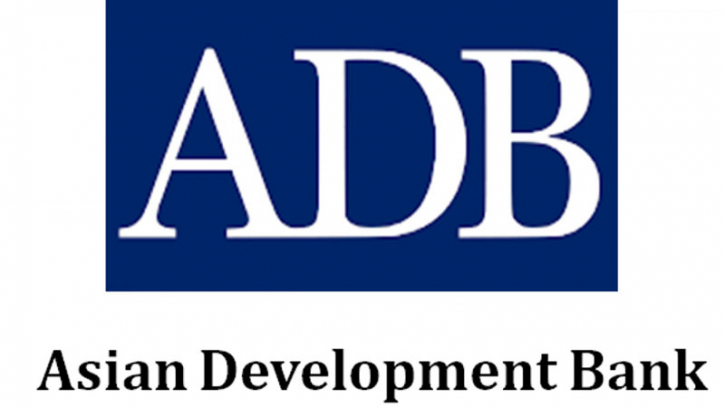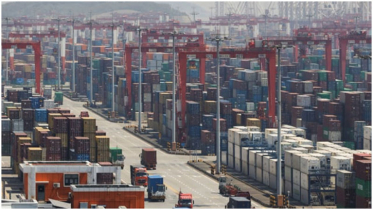BANGLADESH ECONOMIC CORRIDOR
Output in the region likely to rise to $286bn by 2050: ADB

If Bangladesh creates an economic corridor encompassing 14 northeast and southwest districts – from Khulna division to the northeast Sylhet and Mymensingh divisions via the capiutal city Dhaka, the region's economic output could surge to $286 billion by 2050 from $32 billion in 2020, the Asian Development Bank (ADB) has said.
The Philippines based international lender in its "Bangladesh Economic Corridor Development Highlights" released at a city hotel on Wednesday also said that the corridor is expected to generate 2.3 million additional jobs by 2025 and the number will gradually increase to 40.7 million by 2050.
The report says additional economic output and employment generation can be done by establishing 12 manufacturing industries in this economic corridor region.
The economic corridor would need infrastructures aligned with a major transport network, and connect urban clusters with vibrant industrial zones. It also aims to maximise the population benefiting from socio-economic development.
Currently, Bangladesh has its economic growth concentrated mainly in the Dhaka and Chattogram divisions, while other districts such as Khulna, Mongla, Sylhet, Rangpur, Netrokona, Sunamganj, Panchagarh, Nilphamari, and others are lagging behind lacking necessary resources to promote their growth.
Edimon Ginting, country director of the ADB, said to address these challenges, Bangladesh needs a holistic development strategy that will facilitate structural transformation and improve welfare across the country.
"An economic corridor is one such integrated development tool that enhances infrastructure, enables industrial proliferation, creates employment, connects production centers with urban and social agglomerations, and decentralizes development away from the country's developed areas," said Edimon at the launch of the report.
The Bangladesh Economic Corridor has been prepared to assess the economic potential of the northeastern and southwestern regions of the country, proposing a holistic development of the regions to achieve inclusive and sustainable development.
Along with high population and geographical coverage, the corridor region holds strategic locational advantages, according to the ADB report.
There are eight major trade gateways in the economic corridor region: Mongla seaport, Payra seaport, Benapole land port, Bhomra land port, Akhaura land port, Tamabil land port, Bibir Bazar land port, and Nakugaon land port.
While Mongla and Payra seaports provide sea route trade linkages with the world – currently contributing about 11% of seaborne international trade – land ports in the region act as major trade gateways with India, contributing 36% of India-Bangladesh trade.
Hence, the corridor region has the inherent advantage for international trade-dependent industries from the perspective of importing raw materials and/or exporting finished products.
Besides, Northeast Bangladesh has an added locational edge with respect to cross-border trade potential with Northeast India, a landlocked territory with a market demand of $38.5 billion, says the ADB.
The report says leveraging the logistical advantage, agricultural commodities and industries from the Northeast Bangladesh region can find a potential consumer market in Northeast India.
Likewise, Northeast Indian states, being endowed with natural resources, can export rubber, limestone, and other mineral resources to Northeast Bangladesh, which can act as raw materials for local industries.
In addition, Northeast Bangladesh can leverage its proximity with countries like Nepal and Bhutan, says the ADB.
Not just locational advantage, the economic corridor region is rich in agricultural produce and it has an abundance of natural resources. The region contributes 27% of fish production, 50% of tea production, and 20% of rice production of the country.
In addition, the Northeast region has natural gas reserves – more than 4,000 billion cubic feet, which can be used for nonmetallic mineral industries and can also be used for production of power, says the ADB.
MA Mannan, the Planning Minister of Bangladesh, highlighted the significance of investment in infrastructure and policy support for the successful implementation of such corridors.
He noted two major routes in the country: one from Khulna to the haors of Sunamganj and another from the northern region through Dhaka and Chattogram to Cox's Bazar and Teknaf. The challenge of Dhaka's congestion hinders efficient transportation, prompting the need for bypass solutions.
Mannan cited two pivotal achievements – the Bangabandhu Bridge over River Jamuna and the Padma Bridge – as transformative tasks. "Now it is possible to travel by car from Satkhira to Sunamganj or from Teknaf to Panchagarh, which was unimaginable even a few years ago."
He stressed building connectivity as "business has no border and, in this way, informal trade would be reduced".
The corridor region, encompassing roadways, railways, and waterways, however, is grappling with capacity limitations in its trade gateways. The corridor region has four functional airports: Dhaka, Jashore, Barishal, and Sylhet. However, Dhaka and Sylhet airports encounter capacity issues.
The scarcity of infrastructure limits higher-paying industrial and service employment, with 58% of the population employed in agriculture.
The Bangladesh Economic Corridor initiative seeks balanced and decentralised development, addressing industrial, transport, and social infrastructure.
The proposed development could occur in two phases: the southwest segment initially, followed by the northeast portion from Dhaka to Sylhet and Mymensingh, according to the ADB.
.png)




